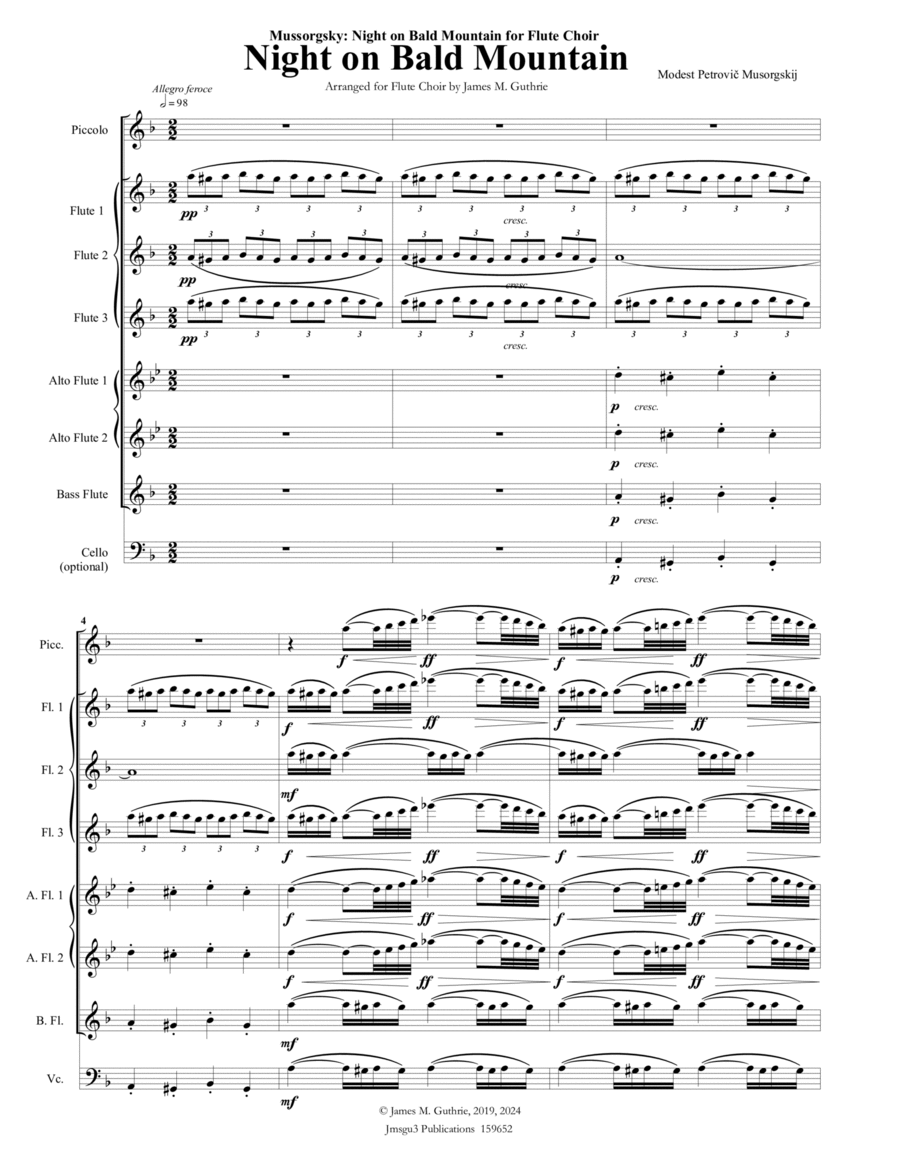Woodwind Ensemble Flute - Level 3 - Digital Download SKU: A0.549955 Composed by Modest Petrovich Mussorgsky. Arranged by James M. Guthrie. Romantic Period,Standards. 227 pages. Jmsgu3 #4337561. Published by jmsgu3 (A0.549955). Score: 140 pages. Duration ca. 11:00. Instrumentation: 1 piccolo, 3 concert flutes, 2 alto flutes, 1 bass flute, 1 cello (optional). Piccolo part: 7 pages, Flute 1 part: 14 pages, Flute 2 part: 13 pages, Flute 3 part: 10 pages, Alto Flute 1 part: 10 pages, Alto Flute 2 part: 11 pages, Bass Flute part: 11 pages, Cello part: 11 pages.Mussorgsky's Night on Bald Mountain is significant for several reasons. Composed in 1867, it is a tone poem inspired by the Russian legend of nocturnal revels on St. John's Night, involving a witches' Sabbath on Bald Mountain near Kiev. The piece is known for its high drama, dark textures, and bold harmonies, which Mussorgsky's colleagues considered excitingly expressive and raw. The work was unpublished and unrevised at the time of the composer's death, and his colleagues, including Rimsky-Korsakov, later revised it. The composition remains a powerful representation of Russian folk tradition. It is associated with the pagan festivities of the midsummer Slavic holiday, making it a significant piece in the history of Russian classical music.The legend of the nocturnal revels on St. John's Night in June on a hill called Lysa Hora near Kiev is a prominent Slavic tale that inspired Modest Mussorgsky's Night on Bald Mountain. The legend tells of a demon, Chernobog, who leads the revels until a far-off church bell sounds disperse the Spirits of Darkness. This tale is associated with the pagan festivities of the midsummer Slavic holiday and is a significant part of Russian folklore and culture. Lysa Hora, meaning Bald Mountain or Barren Mountain, is a large wooded hill in the Ukrainian capital Kyiv, near the confluence of the Dnipro and Lybid' rivers, and is the traditional site of the witch gatherings in Slavic folklore. The legend's themes of darkness, supernatural gatherings, and the triumph of light have made it a compelling source of inspiration for various artistic works, including Mussorgsky's musical composition.
